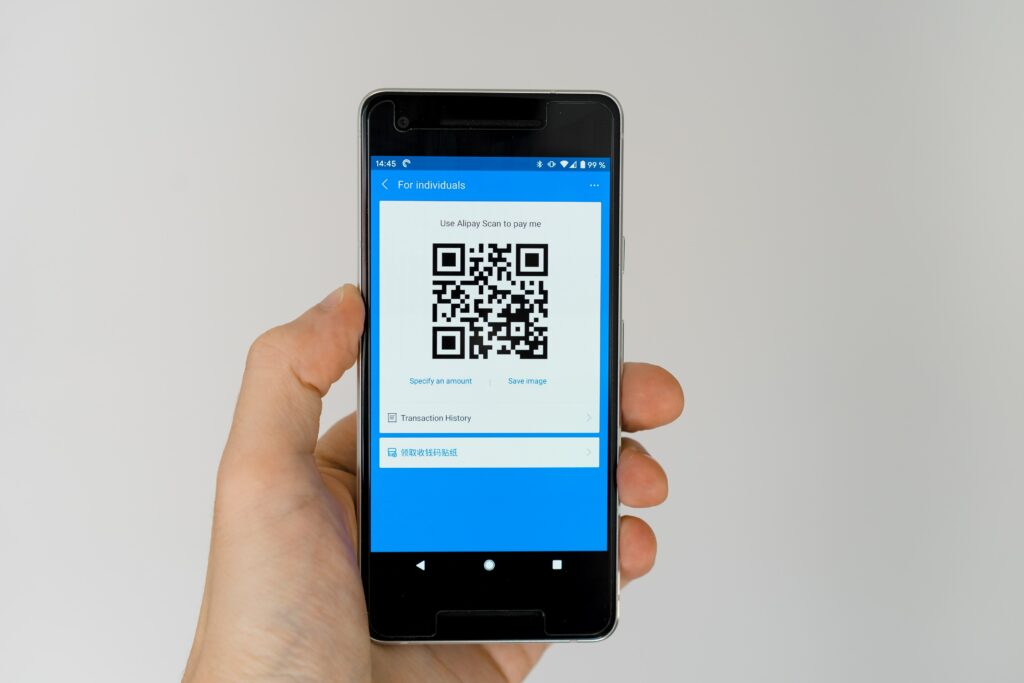Hello fellow surfers of the internet,
Thank you for visiting my blog. Today, I’m going to tackle some topics related to QR codes. As I mentioned in my prior post, I’m going to be focusing on the Capstone project for CS467. This is a final project for the online postbaccalaureate computer science program at Oregon State University.
Luckily, I have a great team for this project and the three of us have decided on an interesting application. I’m sure most of us have seen or used a time management system for work or school. Our team is planning on creating a time management system that uses QR codes to clock in and out. Imagine you’ve just arrived at your work location and need to clock-in. There would be multiple screens or even pages with QR codes all around you. You would just open up the camera on your phone, scan one of the QR codes, and be on your way. Now, you’re clocked in. When you’re leaving, you just have to scan the QR code related with clocking out.
We’re hoping this application can ease the clock-in and clock-out system for certain workplaces. However, what about remote work? It’s obviously important to consider as well. A company could place the QR code in the desktop of a work computer or even use a simple web page on their website. With how popular phones are and how often we use them, we’re hoping that this would be another helpful tool. For the next 9 to 10 weeks, we’ll be developing this application. Hopefully, I’ll be able to show our progress on this blog.
First things first … what are QR codes? It actually stands for quick response. I didn’t really know that, but great to know. You might have seen them before, but QR codes generally look like this:

Before we harness the power of QR codes, I thought it would be useful to learn about them. QR codes are a type of barcode that can be read by digital devices like phones. According to Kaspersky, QR codes store information as a series of pixels in a square-shaped grid. In 1994, QR codes were first developed by a Japanese company called Denso. This company was actually a subsidiary of Toyota. They used QR codes to track vehicles and parts. It was useful for them because these QR codes could be read in two directions (top to bottom and right to left). As a result, they could store a lot more information and be used to encode kanji characters as well. A QR code could also just contain the URL of a website.
Luckily for us, Denso Wave made QR codes publicly available and stated they wouldn’t claim any patent rights. Now, QR codes are used in the public in a whole variety of ways. Also, most cellphones now have built in QR code scanners as well. Some organizations use QR codes to link people to certain website pages or even menus. Apparently, some companies even help with putting QR codes on grave stones. A person could scan the QR code and be given a description of the deceased person’s life. In Ontario (Canada), everyone was given a QR code on their official Covid vaccine certificate as the code can be easily scanned to pull up vaccine records.

It’s important to recognize there could be some safety issues with QR codes. They can be used maliciously. You could have a QR code that links to a fake website where personal information can be collected. From my understanding, you should really only scan QR codes you trust.
Now that I have a better understanding of what QR codes are, I’m hoping to be able to use them for this Capstone project. The next questions are how do I make them and deliver them. As a team, we have decided to use a JavaScript based library by David Shimjs that will help us create these QR Codes. You can find this library at: https://github.com/davidshimjs/qrcodejs
These library is really easy to use and the ReadME.md is helpful. This library also has a MIT license when it comes to using it. Next week, we’ll be tackling Vue.js. It’s a framework similar to React. Specifically, it can be used to develop the front end of a website. I haven’t used it before, so I’ll be researching it as well.
Thank you for sticking with me on this journey. I hope some of this background on QR codes was interesting. I hope you have a great day.
Until next time,
Manbir
Source for information about QR codes:
https://www.kaspersky.com/resource-center/definitions/what-is-a-qr-code-how-to-scan

